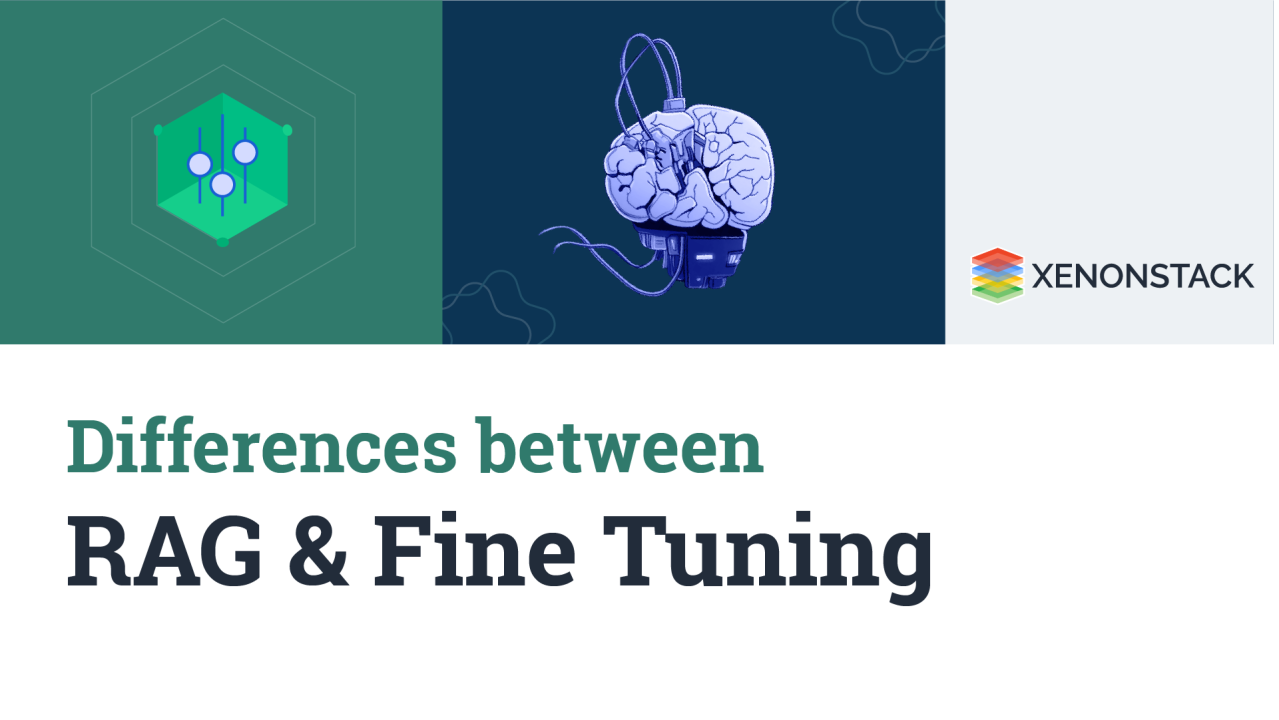
Differences Between RAG and Fine Tuning
What is Retrieval Augmented Generation?
Retrieval-augmented generation (RAG) is a natural language processing (NLP) model that combines the strengths of both retrieval-based and generative approaches. Facebook AI introduced it in a research paper published in 2020. RAG incorporates a retriever and a generator into a unified framework, enabling it to retrieve relevant information from a large set of documents and then generate responses based on the retrieved data.
Applications of RAG
RAG finds versatile applications across various domains, enhancing AI capabilities in different contexts:
Chatbots and AI Assistants
RAG-powered systems excel in question-answering scenarios, providing context-aware and detailed answers from extensive knowledge bases. These systems enable more informative and engaging interactions with users.
Education Tools
RAG can significantly improve educational tools by offering students access to answers, explanations, and additional context based on textbooks and reference materials. This facilitates more effective learning and comprehension.
Legal Research and Document Review
Legal professionals can leverage RAG models to streamline document review processes and conduct efficient legal research. RAG assists in summarizing statutes, case law, and other legal documents, saving time and improving accuracy.
Medical Diagnosis and Healthcare
In the healthcare domain, RAG models serve as valuable tools for doctors and medical professionals. They provide access to the latest medical literature and clinical guidelines, aiding in accurate diagnosis and treatment recommendations.
Language Translation with Context
RAG enhances language translation tasks by considering the context in knowledge bases. This approach results in more accurate translations, accounting for specific terminology and domain knowledge, particularly valuable in technical or specialized fields.
What is Fine Tuning?
Fine-tuning refers to making minor adjustments or modifications to a system or model that has already been trained on a larger dataset. In machine learning, fine-tuning typically involves taking a pre-trained neural network and adjusting its parameters or architecture slightly to adapt it to a specific task or dataset.
How Fine Tuning generally work?
Pre-trained Models
Start with a pre-trained model. Pre-trained models are neural networks trained on large datasets, usually for tasks like image recognition (e.g., ImageNet) or natural language understanding (e.g., GPT-3.5).
Task-Specific Data
Gather a smaller dataset specific to your task. While the pre-trained model has general knowledge, it needs to learn the nuances of your problem. This dataset should be related to the task you want the model to perform.
Adjusting Layers
Modify the top layers of the pre-trained model. Freeze the early layers (which capture general features) and modify the later layers to suit your task. For example, in a neural network for image recognition, you might remove the last few layers and add new layers tailored to your specific classes.
Training
Train the modified model on your task-specific dataset. Since you're starting with a model that has learned many features from the original dataset, you often need fewer epochs (training iterations) than training a model from scratch.
Fine-tuning Parameters
Experiment with hyperparameters during training. This could include learning rates, batch sizes, and regularization techniques. Fine-tuning these parameters is crucial for achieving your task's best performance.
Differences between RAG and Fine Tuning
Basic Ideas
RAG combines traditional text generation with a retrieval mechanism. It means the model generates text, but it retrieves relevant information from a set of documents or passages before generating each token.
Fine-tuning is a training technique where a pre-trained model (like GPT) is further trained on a specific dataset related to a particular task. The model learns task-specific patterns and information from the provided dataset during fine-tuning.
Use Cases
RAG is handy for tasks that require the model to incorporate specific, up-to-date, or domain-specific knowledge from large datasets, like recent news articles or medical research papers.
Fine-tuning is commonly used when applying a pre-trained model to a specific task or domain is needed. It's efficient because the model doesn't start learning from scratch but refines its existing knowledge for the given job.
Benefits
By incorporating information from external sources, RAG can generate more contextually relevant and accurate responses. It's mighty when the knowledge required for generating text is only partially present in the model's pretraining data.
Fine-tuning allows the model to be customized for specific applications without training a massive model from the ground up. It leverages the general language understanding capabilities of the pre-trained model while tailoring it to perform well on a specialized task.
External Knowledge
RAG is designed to augment LLM capabilities by retrieving relevant information from knowledge sources before generating a response. It's ideal for applications that query databases, documents, or other structured/unstructured data repositories. RAG excels at leveraging external sources to enhance responses.
While it's possible to fine-tune an LLM to learn external knowledge, it may not be more practical for frequently changing data sources. Usually, training and evaluating models can be difficult and time-consuming.
Model Customization
RAG primarily focuses on information retrieval and may not inherently adapt its linguistic style or domain-specificity based on the retrieved information. It excels at incorporating external knowledge but may not fully customize the model's behaviour or writing style.
Fine-tuning allows you to adapt an LLM's behaviour, writing style, or domain-specific knowledge to specific nuances, tones, or terminologies. It offers deep alignment with styles or expertise areas.
Conclusion
In summary, RAG incorporates external knowledge from retrieved documents into the generation process while fine-tuning and adapting a pre-trained model to a specific task or domain using a task-specific dataset. These techniques can also be combined, where a model is fine-tuned for a particular task and then further enhanced with retrieval-based mechanisms for generating contextually rich responses.
PHARMACOLOGIST / Data scientist / SOFTWARE DEVELOPER / 3d desingner / AI Algorythms developer
1moFinetuning adjust the entire model params layers , while transfer learning modify and train the top layers !